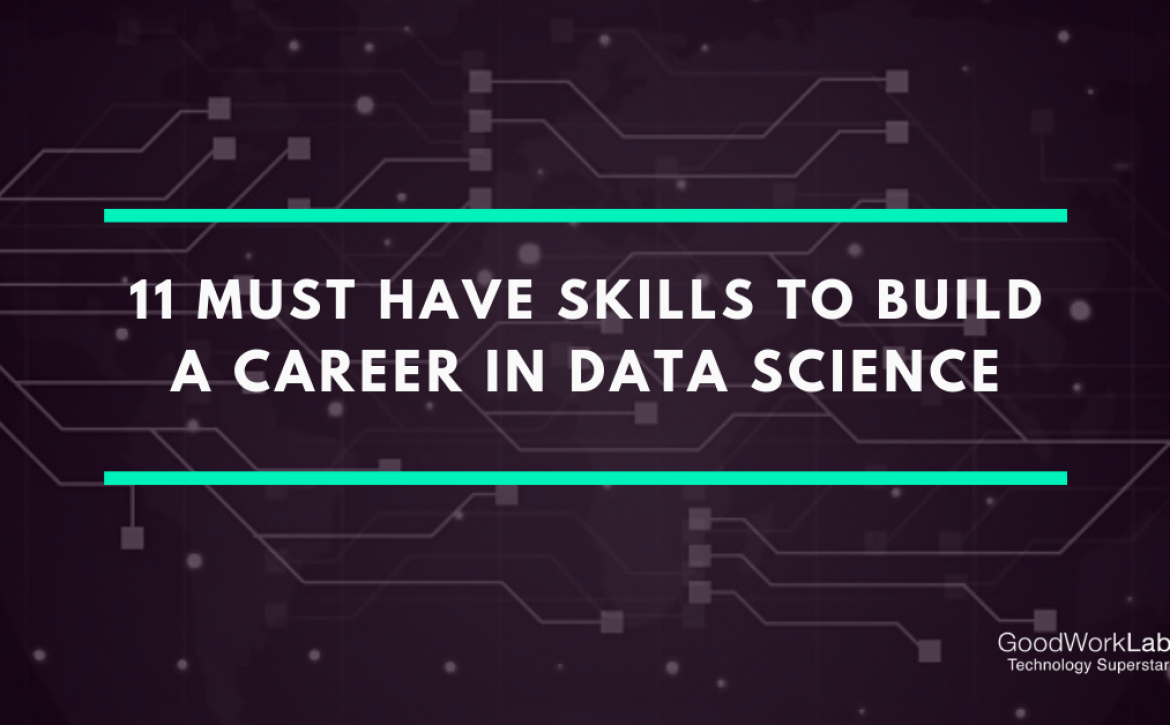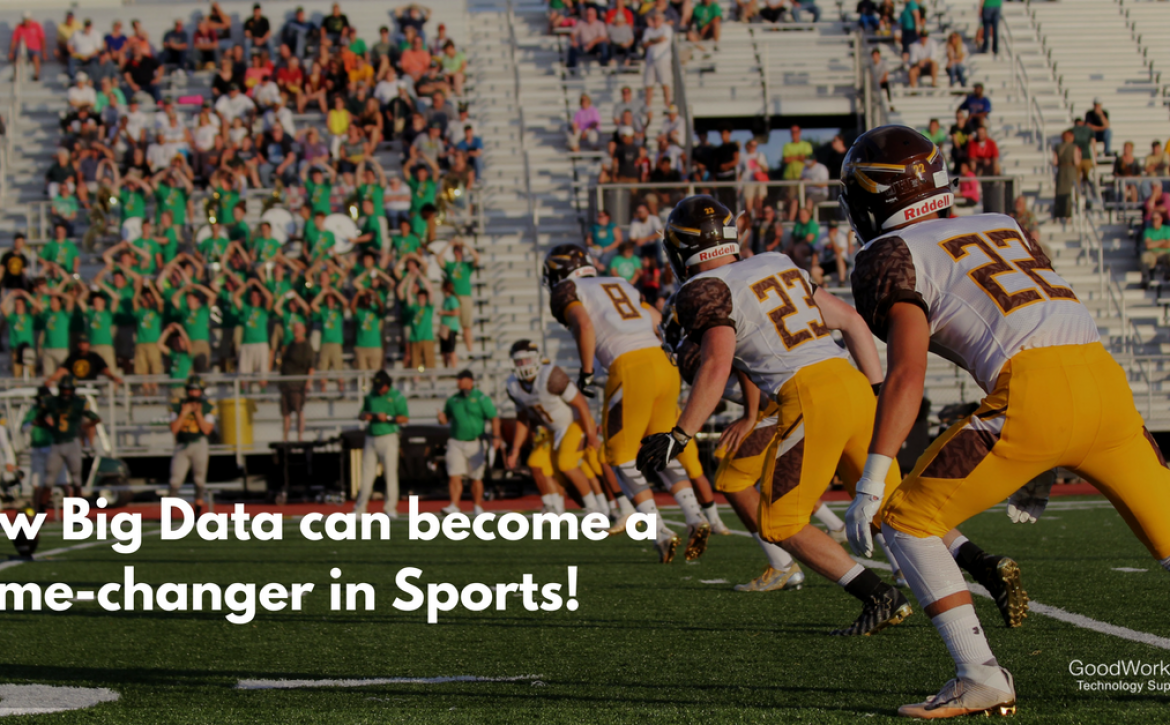11 must-have skills to build a career in Data Science
How to build a career in Data Science
Today, data scientists are one among the highest paid professionals. Technology is soon advancing and it is necessary that you constantly pay attention to upgrade your skills and expertise.
Tech giants such as Google, Facebook, Apple etc, all of them are looking for data science experts to build intelligent and path-breaking products.
If you are planning to become a data scientist, then you need to be well-versed in some programming languages. In this blog, we list the top 11 skills that you must possess to become a successful data scientist.

1. Education
Data scientists are usually from the highly educated crowd in the college. As a matter of fact, 46% of them have PhDs while 88% of them have a Master’s degree.
You could be from any stream like social science, physical science, computer science, or statistics in order to be a data scientist. The common field of studies are as follows:
- Mathematics and Statistics (32%),
- Computer Science (19%)
- Engineering (16%).
A degree course in the above fields helps you to develop skills you need to analyze big data. It is highly recommended to obtain a Master’s or Ph.D. after successful completion of the Bachelor’s program. To transit into the data science field, you will require to pursue your master’s degree in Mathematics, Data Science, Astrophysics or any such related field.
2. R Programming
R programming is specially designed for data science needs. Any problem in the field of data science can be solved with R. Currently, 43% of data scientists use R to solve statistical problems. Therefore, it is recommended to learn R.
However, R is tricky to learn especially if you have already mastered a programming language. An online learning program should be taken up to learn R.
3. Python Coding
Along with Java, C/C++, Perl, Python is the most common coding language and is perfect for data scientists. Around 40% of the data scientists use Python as their major programming language. Python is a versatile language and can be used in almost all the steps of the data science processes.
With Python, you can easily import SQL tables into your code and also process various forms of data. Further, it allows you to create your own datasets.
4. Hadoop Platform
This is not a pressing requirement but it is highly preferred in many cases. Also, if you have experience with Pig or Hive or familiarity with cloud tools such as Amazon S3, you will be preferred over other applicants.
Why Hadoop platform is important?
There might be a situation when the volume of data to be processed exceeds your system’s memory and you will require to send data to different servers. In such a situation, you can use Hadoop to transfer your data to various points. Also, Hadoop can be used in data sampling, data exploration, data filtration, and summarization.
5. Apache Spark
Apache Spark is faster than Hadoop with the same big data computation framework. The reason why Apache spark is faster than Hadoop is that Spark caches the computations in memory while Hadoop reads and writes to disk.
Apache Spark helps data scientists to handle complex unstructured data sets and saves time by processing the data faster. It can be used on one machine or a bunch of machines, at once.
6. SQL Database/Coding
SQL stands for Structured Query Language. SQL is a programming language which enables you to carry out operations like delete, add, and extract data from a database. Also, it helps in transforming database structures and carrying out analytical functions.
For becoming a successful scientist, you need to be proficient in SQL. SQL will help you to access, communicate and also work on data. It has brief commands that can help you lessen the amount of programming you need to perform. Additionally, it will help you comprehend relational databases and boost your experience profile.
7. Data Visualization
For a data scientist, it is essential to visualize data to make it easier to understand. This can be done with data visualization tools such as d3.js, Tableau, ggplot, and Matplottlib. These tools can convert data into easy formats.
Data visualization is the need of the contemporary corporate world because of the insights delivered. These insights indicate which business opportunities to grab and how to stay ahead of the competition.
8. Machine Learning and AI
Machine Learning can give you an edge over others as with this you can transform the way data science is functioning. Most data scientists are not proficient in this field. To stand ahead of others, you must learn decision tree, supervised machine learning, logistic regression, etc. Read here for more information on which Machine Learning Algorithm to pick.
A proficiency in Machine Learning helps you in solving complex data science problems that are based on predictions.
Other examples of advanced machine learning skills that you should consider are Unsupervised machine learning, Natural language processing, Outlier detection, Time series, Recommendation engines, Survival analysis, Reinforcement learning, Computer vision, and Adversarial learning.
9. Unstructured data
A data scientist must essentially be able to work with unstructured data. Basically, the unstructured data are undefined content that can not be put into database tables.
For instance, customer reviews, videos, blog posts, video feeds, social media posts, audio etc. Such heavy data is difficult to sort because they have no order.
Unstructured data is also referred to as ‘dark analytics’ because of its complex nature. Ability to comprehend and discern unstructured data from several platforms is the prime attribute of a data scientist. It helps you interpret the insights that are useful for decision making.
Apart from the above mentioned technical skills, following non-technical skills will help you to achieve your goals faster.
10. Intellectual curiosity
Curiosity provides you with the thirst to learn something new every day. As a data scientist, you will counter new problems every now and then, at this moment, curiosity will motivate you to find solutions to your problems.
On average, data scientists spend about 80% time in discovering and preparing data. In order to keep pace with the evolving world of data science, you need to keep learning.
11. Communication skills
Data scientists make complex data understandable for normal people which is why it is essential for them to have smooth communication skills. With fluent communication skills, they will be able to explain their technical findings to non-technical teams such as Sales or marketing department.
Thus, with these 11 skills, you will be able to launch your career as a Data Scientist. Even if you are someone who is planning to shift technologies, just spend some time to learn programming languages such as R, Python and the Apache suite and you will be in a good position to start off a career in data science.




















